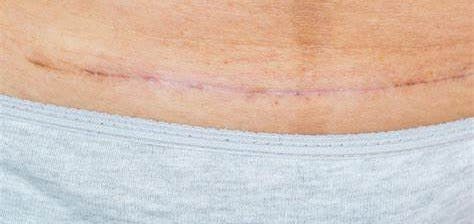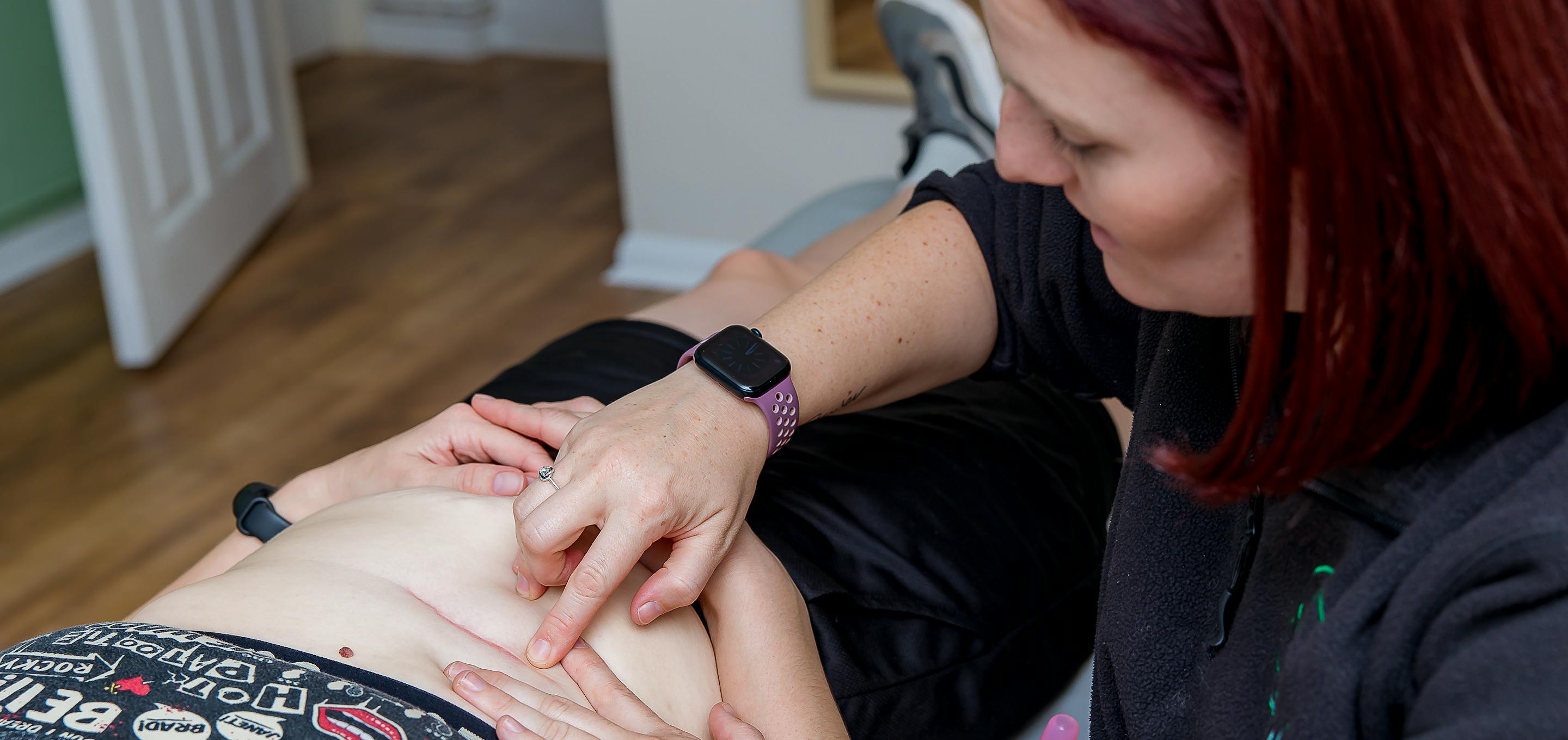There’s a lot going on after you’ve had a C-section, new baby, new routine, new sleep schedule (or lack of one!). Amidst all that, it can be easy to forget that you’ve also had major abdominal surgery, and your body deserves time, care, and kindness as it heals.
Scar therapy is one of the gentle ways we can support that healing once your scar is no longer an open wound — so, after it’s sealed and any scabs have gone. The early sessions are very light and nurturing, often no more than a few minutes of soft tissue release and gentle work around the fascia. It’s never about forcing change; it’s about helping your body reconnect, ease tension, and move comfortably again.
C-section scars can sometimes feel tight, sensitive, or even a bit disconnected from the rest of your body. Gentle scar therapy helps to reduce redness, soften the tissue, and calm sensitivity. Over time, it can also improve how the surrounding muscles and fascia move, which can make everyday activities feel more comfortable — from standing tall to laughing without that familiar “pull.”
Of course, healing isn’t just what happens on the treatment table. Your body’s doing incredible repair work, and there are a few simple things you can do to support it at home:
1. Nourish your healing:
Your tissues need building blocks to repair, and protein is key. A good guideline is around 2.2 grams of protein per kilogram of body weight per day. That might sound like a lot, but it adds up easily when you include foods like eggs, fish, chicken, beans, lentils, and nuts. Think of it as feeding your recovery.
2. Silicone tape:
Once your scar is fully closed and dry, silicone tape can help soften and flatten the tissue. It’s easy to use, gentle on the skin, and can make a visible difference over time.
Most importantly, take things slowly. Healing is not a race — it’s a conversation between your body and your care. Give yourself permission to rest, breathe, and let your scar become simply a beautiful part of your story.
If you’d like some support along the way, we offer gentle, tailored scar therapy sessions at our Sittingbourne and Isle of Sheppey clinics. We’ll work at your pace, helping your body feel more comfortable and connected again. You’ve done the hard work of bringing life into the world — now it’s time to nurture your own healing too.
Frequently Asked Questions
What can scar therapy help with?
Scar therapy can help with a wide range of surgical and traumatic scars from C-sections and joint replacements to burns, accidents, or other surgical procedures. It can reduce redness, tension, and sensitivity while improving the feel and mobility of the surrounding tissues.
When can scars be treated?
Treatment can begin once the wound has fully sealed and any scabs have gone — usually around 6 to 8 weeks post-surgery. The earlier we begin gentle therapy, the easier it is to support your body’s natural healing response.
My scar is years old — can scar therapy still help?
Yes! While the optimum time for treatment is between 8 weeks and 12 months, scars can still respond and improve even years later. The body is constantly renewing and adapting, so change is always possible.
Are there things I can do for myself?
Absolutely. Your practitioner will show you gentle self-care techniques to use at home, as well as recommend products that can help — such as silicone tape or specific moisturisers. Empowering you to care for your own healing is an important part of the process.






